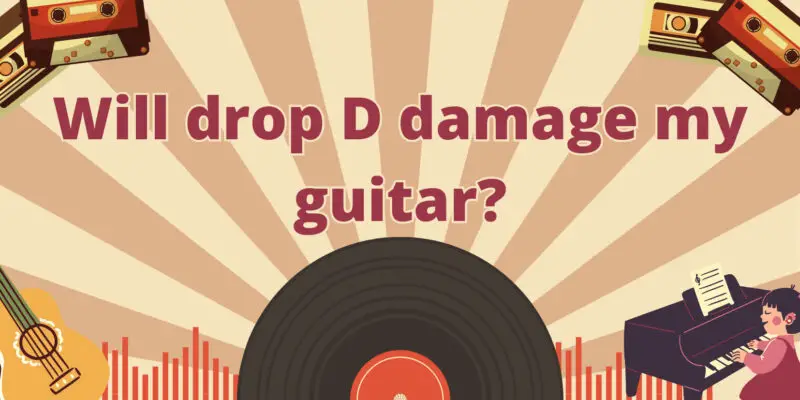Drop D tuning is a popular and widely used alternate tuning for the guitar, celebrated for its ability to create powerful riffs and unique chord voicings. However, some guitarists have concerns about whether using drop D tuning could potentially damage their instruments. In this article, we’ll address these concerns and explore whether drop D tuning poses any risks to your guitar.
Understanding Drop D Tuning:
Before delving into concerns about potential damage, it’s essential to understand what drop D tuning entails. In drop D tuning, the low E string (the thickest string) is tuned down one whole step to D. The remaining strings (A, D, G, B, and high E) remain in standard tuning. This tuning creates a lower, heavier sound by providing easy access to power chords and unique chord voicings.
Addressing Concerns:
- String Tension:
- Concern: Some guitarists worry that dropping the low E string down to D may alter the overall string tension and put excessive stress on the neck or bridge of the guitar.
- Reality: In drop D tuning, while the tension on the low E string decreases slightly, it remains within the range that most guitars are designed to handle. Modern guitars are built to withstand variations in string tension, including alternate tunings like drop D.
- Neck Adjustment:
- Concern: There’s a misconception that drop D tuning requires significant adjustments to the guitar’s neck, potentially causing warping or damage.
- Reality: In most cases, minor adjustments, such as truss rod tweaks, may be needed to maintain the guitar’s optimal playability. These adjustments are typically part of regular guitar maintenance and should not cause damage when performed correctly.
- Bridge and Nut Concerns:
- Concern: Some worry that the change in string tension might affect the guitar’s bridge, saddle, or nut.
- Reality: Guitars are designed to accommodate different tunings and string gauges. If your guitar is well-maintained and set up correctly, the impact on these components should be minimal. However, if you frequently switch between standard and drop D tuning, you may want to consider a professional setup to ensure optimal performance.
- String Gauge:
- Concern: Switching to drop D tuning might require a different string gauge, which could impact the guitar’s setup.
- Reality: While some players prefer heavier strings in drop D tuning for better tension balance, many continue to use standard string sets with no issues. String gauge choices are largely a matter of personal preference and playing style.
Conclusion:
Drop D tuning is a safe and widely used alternate tuning that should not pose any significant risk to your guitar if employed responsibly. Like any tuning, it may require minor adjustments and regular maintenance to ensure optimal playability and sound. If you have concerns or are unfamiliar with guitar setup and maintenance, consulting a professional guitar technician can provide peace of mind and help keep your instrument in excellent condition.


